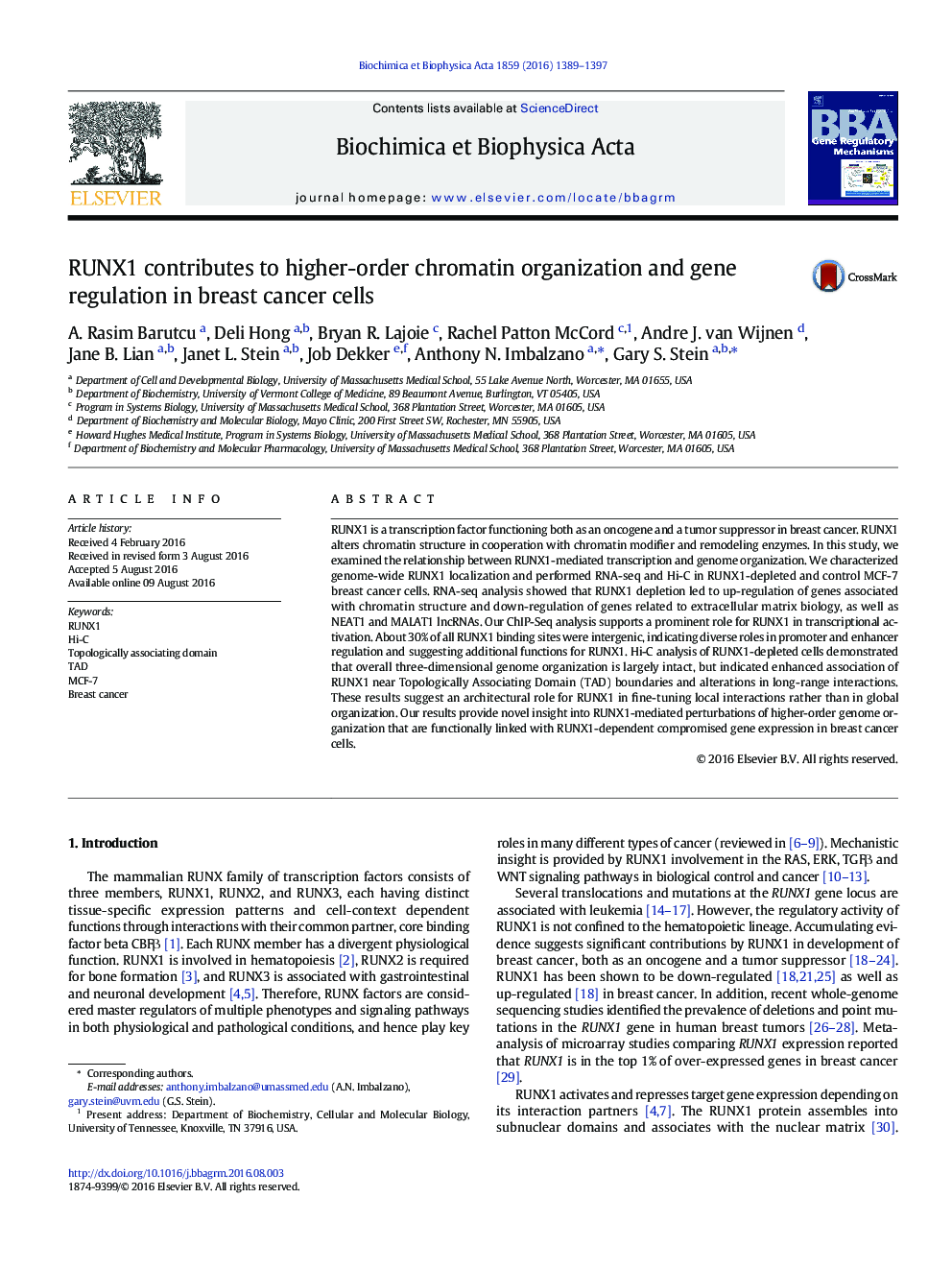| Article ID | Journal | Published Year | Pages | File Type |
|---|---|---|---|---|
| 1946277 | Biochimica et Biophysica Acta (BBA) - Gene Regulatory Mechanisms | 2016 | 9 Pages |
•RUNX1 depletion leads to dysregulation of genes associated with chromatin structure and extracellular matrix biology.•RUNX1 binds similarly to promoters, introns, and intergenic regions, indicating diverse roles in gene and enhancer regulation.•RUNX1 binds similarly to genic and intergenic regions, indicating diverse roles in gene and enhancer regulation.•Hi-C analysis identifies RUNX1 as a contributor of local chromatin interactions, rather than a global genome organizer.•This study provides an overview of the role of RUNX1 in gene expression and genome structure in breast cancer cells.
RUNX1 is a transcription factor functioning both as an oncogene and a tumor suppressor in breast cancer. RUNX1 alters chromatin structure in cooperation with chromatin modifier and remodeling enzymes. In this study, we examined the relationship between RUNX1-mediated transcription and genome organization. We characterized genome-wide RUNX1 localization and performed RNA-seq and Hi-C in RUNX1-depleted and control MCF-7 breast cancer cells. RNA-seq analysis showed that RUNX1 depletion led to up-regulation of genes associated with chromatin structure and down-regulation of genes related to extracellular matrix biology, as well as NEAT1 and MALAT1 lncRNAs. Our ChIP-Seq analysis supports a prominent role for RUNX1 in transcriptional activation. About 30% of all RUNX1 binding sites were intergenic, indicating diverse roles in promoter and enhancer regulation and suggesting additional functions for RUNX1. Hi-C analysis of RUNX1-depleted cells demonstrated that overall three-dimensional genome organization is largely intact, but indicated enhanced association of RUNX1 near Topologically Associating Domain (TAD) boundaries and alterations in long-range interactions. These results suggest an architectural role for RUNX1 in fine-tuning local interactions rather than in global organization. Our results provide novel insight into RUNX1-mediated perturbations of higher-order genome organization that are functionally linked with RUNX1-dependent compromised gene expression in breast cancer cells.
